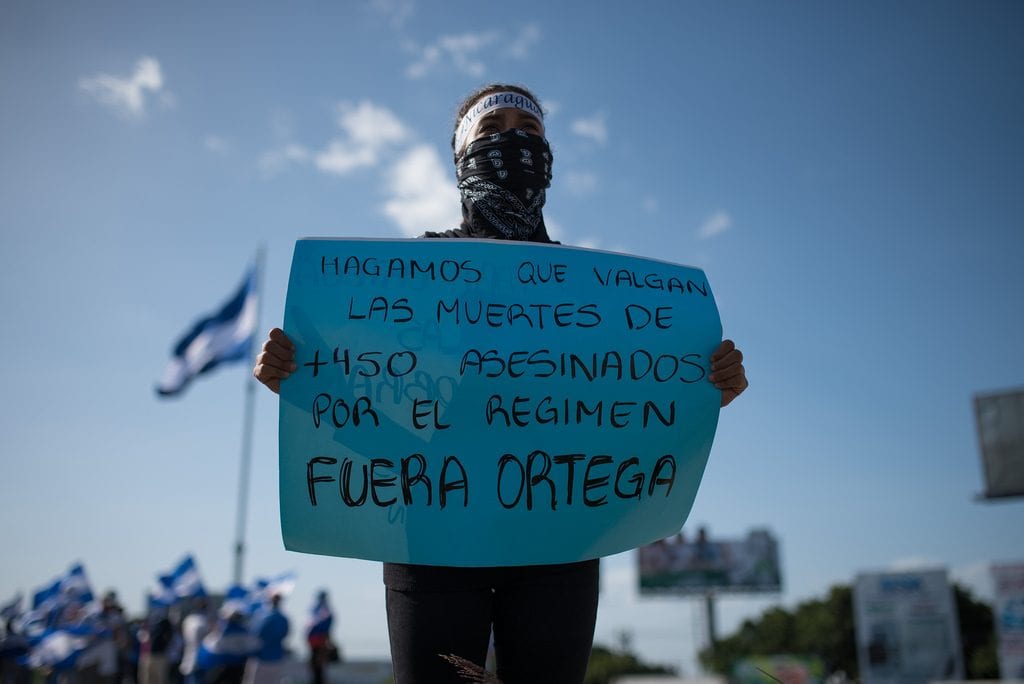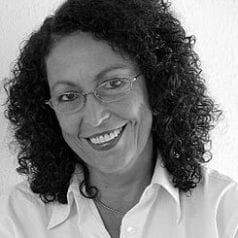A Peoples’ Uprising Is Not a Coup

The history of people’s revolts shows that no ruler nor policy of terror can stop their upward surge.
By Monica Baltodano (Confidencial)
HAVANA TIMES – One of the lies that Daniel Ortega’s dictatorial regime constantly repeats is that the formidable anti-dictatorial movement that came into public existence on April 18 is some sort of foreign-backed right-wing conspiracy to oust him.
If we look at the standard definition of a coup d’état, we see that it is “a sudden, violent and illegal seizure of political power, often by a small (military) group, violating the state’s legitimacy and rules of political succession as established by its laws and universal suffrage”.
The April uprising does not have any of the above features. To begin with, Ortega’s own legitimacy is questionable since he had himself reelected in 2011 doubly violating an article of Nicaragua’s Constitution that forbids consecutive-term reelection and limits presidential reelection to only two tenures. Additionally, his 2016 reelection was the result of vote rigging.
Ortega’s “legitimacy” is the same that Somoza had when he was ousted in 1979, after a fraudulent reelection in 1974. Up until the last moment, Somoza claimed that he was Nicaragua’s constitutionally president elect. The will of a people demanding his resignation showed itself in the swelling of the ranks of the armed uprising that cut short his tenure.
By far, ordinary citizens are the bulk of Nicaragua’s anti-Ortega demonstrations. On the other hand, power elites, namely army officers, are the ones that carry out coups. It is worth remembering the trigger of the latest cycle of protest: people hit the streets to repudiate an onerous social security tax reform. If the initial mobilization transformed itself into a full-blown popular uprising, it was thanks to Ortega’s escalade of repression.
Without snipers or ski-masked thugs shooting and killing protesters across Nicaragua, the initial protest would not have flared up. If the state’s repression was a direct cause of the barricades that protesters set up all over Nicaragua, then it is the main party responsible for the uprising. Its criminal actions are to blame.
Nicaragua and the whole world have seen that this is a massive unarmed social uprising. An uprising that spread across Nicaragua and that included people from all walks of life. This peaceful revolt has surpassed the number of localities that rose against Somoza in 1979. Today’s barricades spread all over the country to places that did not rise against Somoza. Despite state terror, ordinary Nicaraguans are still participating in marches in the remotest towns of Nicaragua. Furthermore, and more extraordinary, liberal, conservatives, social Christians, Sandinistas, socialists, ex contras and people without party sympathies (whom are the majority of the population) have joined the protests.
Article 2 of Nicaragua’s Constitution states that “national sovereignty belongs to the people who exercise it through democratic means and participate freely in building and improving the nation’s economy, politics and socio-cultural systems”. In Nicaragua, the state has continuously violated this principle along with those contained in articles 5, 23, 25, 26, 28,29,30,31,32,33,34.35,36,37,38. 39, 40, 44, 45 and others. Article 23 states that the right to life is uninfringeable and inherent to every human being. Nicaragua does not have the death penalty and yet extra judicial executions have occurred for years. As the IACHR has reported, the Nicaraguan state has perpetrated a whole set of crimes against its citizens.
Under this ordeal, rebellion is a right. The right to rebel against oppression was included in the Universal Declaration of the Rights of Man and of the Citizen of the French Revolution of 1789. Article 35 states, “when the government violates the rights of the people, insurrection is for the people and for each portion of the people the most sacred of rights and the most indispensable of duties”.
The preamble to the 1948 Universal Declaration of Human Rights states, “it is essential, if man is not to be compelled to have recourse, as a last resort, to rebellion against tyranny and oppression, that human rights should be protected by the rule of law”. When governments persecute, murder and “disappear” their citizens, revolt is not only a right but also a supreme duty.
The April insurrection of Nicaragua was the legitimate response of a people resisting the state’s onslaught. It is worth repeating that resistance is an inherent right of any organized society. Who is the coup monger? Whose power rest solely on violent repression, murder, incarceration and torture of unarmed civilians?
Latin America has a rich history of unarmed civilian uprisings that overthrew corrupt leaders. In some cases, governments were forced to concede to changes; in others, corrupt and authoritarian leaders were forced to resign. These uprisings often recurred to traffic blockages, barricades and non-stop street protests. Some notable examples that led to presidents’ removals are:
Brazil 1992. After Congress approved his impeachment trial, Brazilian president Fernando Collor de Mello resigned the presidency. A student movement known as the caras pintadas organized massive public demonstrations demanding Collor de Mello’s resignation. With the loss of popular support, the Brazilian Congress voted to impeach him and he resigned in September 29 in the midst of numerous corruption scandals.
Ecuador 1997. Ecuadorian president Abadalah Bucaram was ousted from office. After numerous public demonstrations, on February 5 1997, a group of social organizations organized a nation-wide protest to repudiate Bucaram. As a result of popular pressure, the Ecuadorian Congress voted to remove him from office, deeming him mentally incompetent to govern.
Paraguay 1999. Paraguayan president Raul Cubas Grau was ousted from office. After the assassination of his vice-president Luis Maria Agana, there were a series of public demonstrations against his government. First students and later labor unions and farmers organizations demanded his resignation. He resigned in the end.
Ecuador 2000. President Yamil Mahuad was deposed after six days of intense street fighting and demonstrations.
Peru 2000. One hundred and seventeen days into his third mandate, Peruvian dictator Alberto Fujimori fled as a result of massive protests against him over his corruption and authoritarianism.
Argentina December 2001. Presidents Fernando de la Rua and later Rodriguez Saa were deposed. Popular protest forced neoliberal president Fernando de la Rua out of his seat. First the jobless, known as the piqueteros, led the protest but were joined by social movements and the middle class after the president imposed a freeze on bank deposit withdrawals. De la Rua was forced to resign and early elections held. However, no sooner the newly elect president Adolfo Rodriguez Saa took office, he was already being deposed only 7 days after for not complying with the protesters demands.
Argentina June 2002. After Rodriguez Saa ouster, Eduardo Duhalde took over as president. He was supposed to have completed Fernando de la Rua´s tenure. However, popular protests did not subside and on June 26, during a piquetero demonstration, police killed two protesters and wounded 33 others. This incident, which would later would be known as the Avellanada or the Puente Pueyrredon massacre, produced mass repudiation against Duhalde, who was forced to resign and call for an early election.
Bolivia 2005. Gonzalo Sanchez de Lozada flees the country. Popular insurrections rocked Bolivia. A series of natural resource “wars” occurred: in 2000, Bolivians protested against Bechtel´s plan to privatize water and in 2003, spearheaded by the country’s miners, Bolivians blocked the government’s plan to extract and export gas cheaply. September and October 2003 saw massive protests, road blockages and an indefinite nation-wide strike. The government declared a state of siege and sought to put down the rebellion with the army. As a result, 80 persons were killed. Sanchez de Lozada was forced to resign on October 17.

Ecuador 2005. A new civilian insurrection known as the “revolt of the bandits” put an end to Lucio Gutierrez presidency. “Bandit” was the epithet that president Gutierrez used to smear the protesters.
Guatemala 2015. Guatemala’s Congress voted to remove Otto Perez Molina from office after massive protests demanding his resignation. The protesters were enraged by multiple proven cases of corruption.
The history of people’s revolts shows that no ruler nor policy of terror can stop their upward surge. For this reason, the main challenge for the people of Nicaragua is to keep up the popular uprising within the terms of non-violence and civility. Unity and consensus will make us stronger. We must maintain the pressure and not rest until we force out Ortega, who has lost all legitimacy and is strategically defeated. History has already drawn its verdict.
